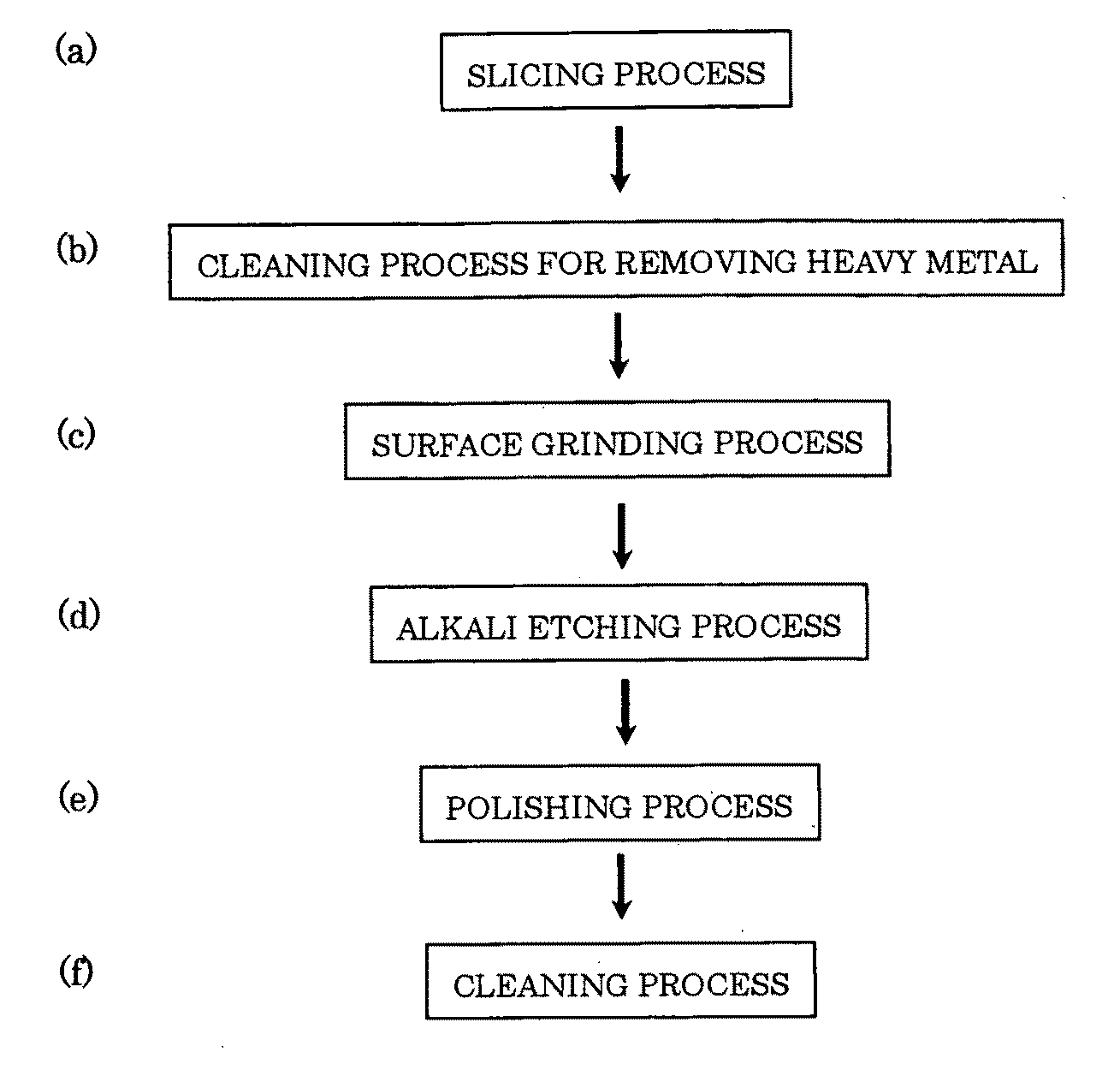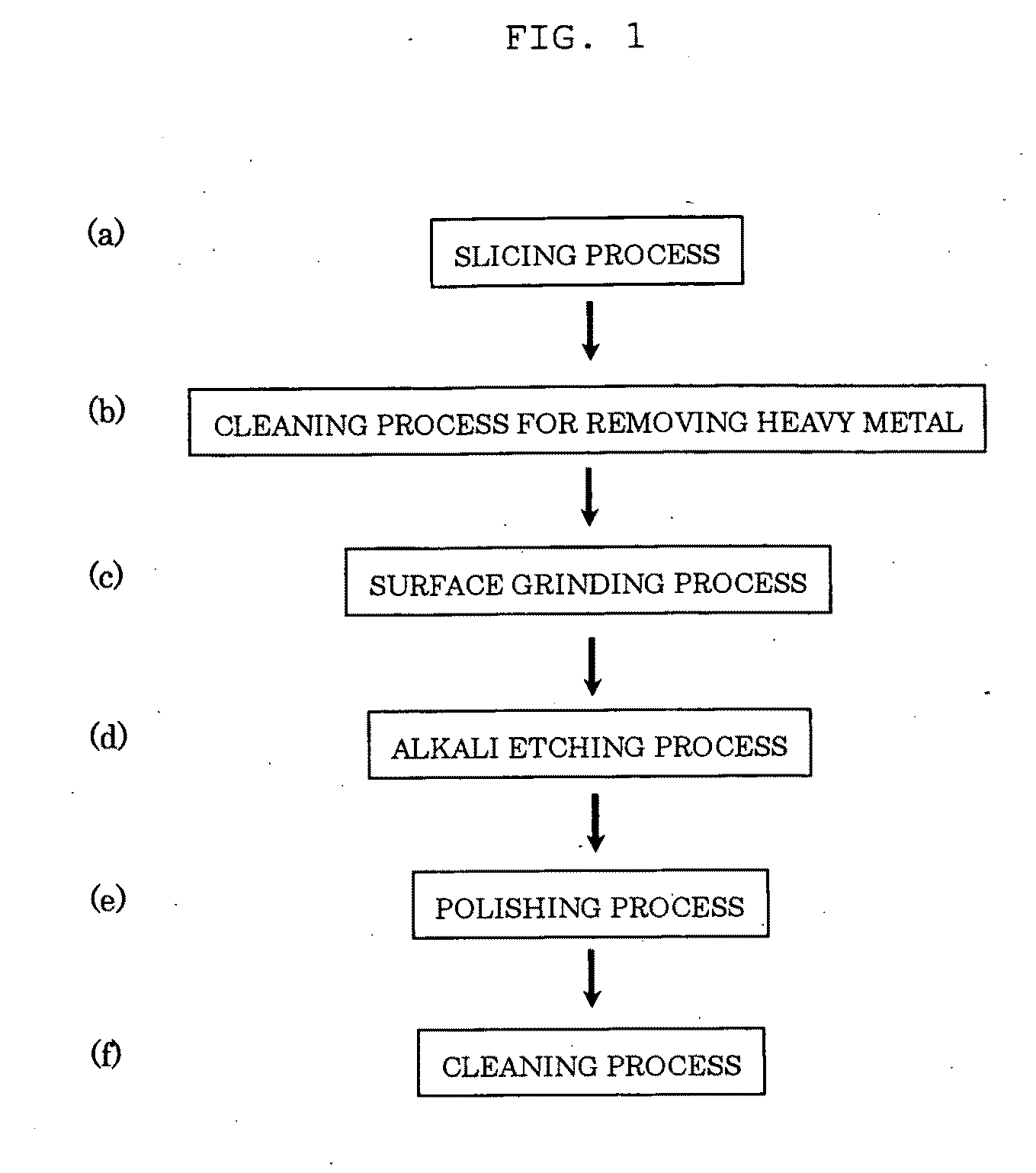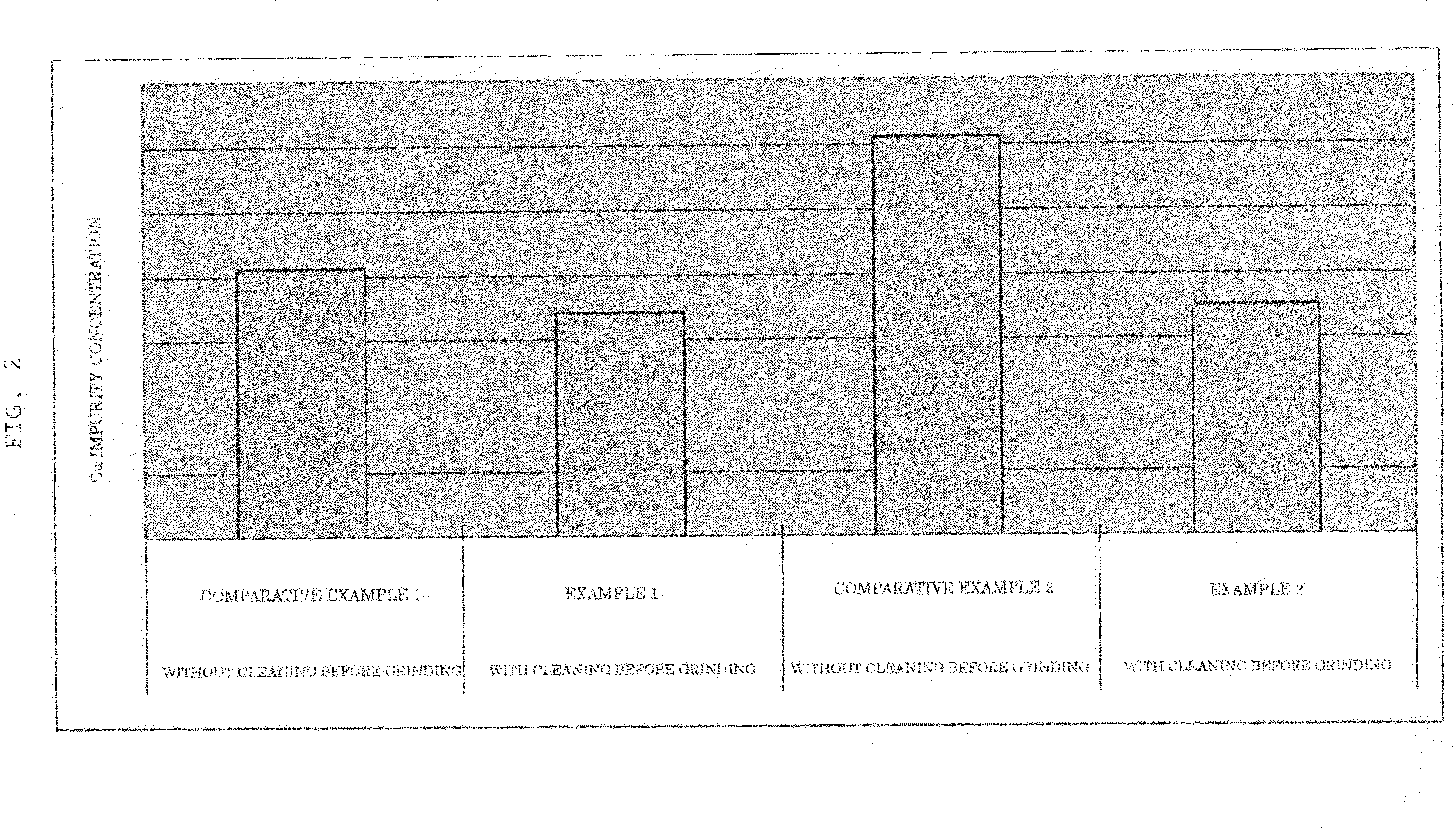Surface Grinding Method and Manufacturing Method for Semiconductor Wafer
- Summary
- Abstract
- Description
- Claims
- Application Information
AI Technical Summary
Benefits of technology
Problems solved by technology
Method used
Image
Examples
example 1
[0058]First, a silicon single crystal ingot pulled up by the Czochralski method was sliced by using a wire saw to be processed into a thin discoid wafer (a diameter of 300 mm, a P type, an orientation ) (a slicing process, FIG. 1(a)).
[0059]Subsequently, a heavy metal, which adhered to the wafer, was removed by SC-1 cleaning (a cleaning process for removing the heavy metal, FIG. 1(b)). A SC-1 cleaning liquid was a mixed solution containing ammonia, a hydrogen peroxide, and pure water, and a concentration was adjusted to contain 3% (capacity %) of ammonia and 3% (capacity %) of a hydrogen peroxide solution. After adjustment, a chemical temperature was set to 80° C., and cleaning for 180 seconds was carried out. After cleaning, the wafer was rinsed with pure water, and rotated to be dried by spin drying.
[0060]Subsequently, the wafer was subjected to surface grinding in order to remove a mechanically damaged layer induced in a wafer surface layer by slicing in the slicing process and to...
example 2
[0065]A slicing process was performed under the same conditions as those of Example 1.
[0066]Then, a wafer was flattened by lapping processing using loose abrasive grains (a lapping process).
[0067]Then, the wafer was etched to remove a mechanical damage produced in a wafer surface layer in the lapping process (an etching process). An NaOH aqueous solution having a concentration of 52% was used as an etchant, and a liquid temperature was set to 80° C.
[0068]Subsequently, a cleaning process for removing a heavy metal, a surface grinding process, an alkali etching process, a polishing process, and a cleaning process were carried out under the same conditions as those of Example 1.
example 3
[0072]A slicing process, a lapping process, an etching process, a cleaning process for removing a heavy metal, a surface grinding process, an alkali etching process, a polishing process, and a cleaning process were performed under the same conditions as those of Example 2 except that the following different three conditions were provided to cleaning liquids in the cleaning process for removing the heavy metal.
(1) An SC-1 cleaning liquid: this is a mixed solution containing ammonia, a hydrogen peroxide, and pure water, and a concentration was adjusted to contain 3% (capacity %) of ammonia and 3% (capacity %) of the hydrogen peroxide (equal to Example 2). A chemical temperature was set to 80° C., and a cleaning time was set to 180 seconds.
(2) An SC-2 cleaning liquid: this is a mixed solution containing a hydrochloric acid, a hydrogen peroxide, and pure water, and a concentration was adjusted to contain 3% (capacity %) of the hydrochloric acid and 3% (capacity %) of the hydrogen peroxi...
PUM
 Login to View More
Login to View More Abstract
Description
Claims
Application Information
 Login to View More
Login to View More - R&D
- Intellectual Property
- Life Sciences
- Materials
- Tech Scout
- Unparalleled Data Quality
- Higher Quality Content
- 60% Fewer Hallucinations
Browse by: Latest US Patents, China's latest patents, Technical Efficacy Thesaurus, Application Domain, Technology Topic, Popular Technical Reports.
© 2025 PatSnap. All rights reserved.Legal|Privacy policy|Modern Slavery Act Transparency Statement|Sitemap|About US| Contact US: help@patsnap.com



